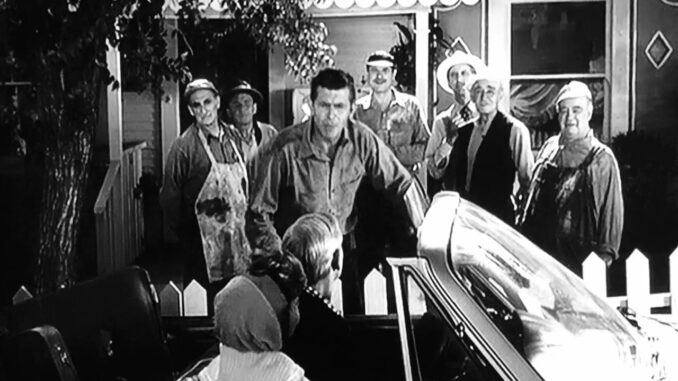
Creepy Secrets Behind The Andy Griffith Haunted House Episode
Mayberry. The very name evokes a sun-drenched, idyllic past, a gentle melody of wholesome values, friendly faces, and problems that always, always, found a comforting resolution by sundown. The Andy Griffith Show was the television embodiment of this Rockwellian dream, a balm for the mid-century soul. Yet, even in this sanctuary of folksy charm, there lurked an episode that dared to venture into the unsettling, revealing "creepy secrets" not of the supernatural kind, but of the human condition itself: "The Haunted House."
On the surface, the premise is simple and fitting for a lighthearted autumn special: Andy, Barney, Opie, and Goober (or Gomer, depending on your preferred re-watch, though Gomer it is in this classic) venture into an old, dilapidated house on the outskirts of town, rumored to be haunted. The scene is set with creaking doors, ominous shadows, and the requisite nervous jitters from Barney and Goober. The expectation is a classic comedic ghost story, a series of harmless jump-scares and mistaken identities, culminating in the reveal of a raccoon or a mischievous teenager. Mayberry, after all, couldn't possibly harbor real ghosts. The true "creepy secrets" of this episode, however, lie not in the spectral, but in the shocking unveiling of a hidden truth far more poignant and discomfiting than any sheet-clad apparition.
The first, and most profound, creepy secret revealed is the stark reality of hidden poverty and social marginalization. As Andy and his companions brave the eerie silence and unsettling noises, they eventually discover not ghouls, but a family – Mr. and Mrs. Johnson and their children – living in utter destitution, deliberately creating the "haunting" to keep curious townspeople away. This revelation cuts through Mayberry's idyllic veneer like a cold blade. It forces the viewer to confront the uncomfortable fact that even in a seemingly perfect community, there are those living in the shadows, ostracized by circumstance or fear, reduced to squatting in abandoned properties and fabricating ghost stories to preserve a semblance of privacy and dignity. The "ghosts" were a desperate ruse, a chilling metaphor for people who felt they had to disappear from society to survive.
This leads to the second creepy secret: the vulnerability of Mayberry's perfect façade. For seasons, we are led to believe that Mayberry is a place where everyone is known, everyone is cared for, and no one falls through the cracks. The Johnsons' existence shatters this illusion. Their plight exposes a blind spot, a hidden underbelly that the town, for all its collective heart, had somehow missed or ignored. The "haunted house" wasn't just a place of spooky noises; it was a visible symptom of a deeper, unseen societal ill. The unease stemming from this secret isn't fear of a specter, but the unsettling realization that even in utopia, there are cracks, hidden suffering, and a chilling potential for human neglect, however unintentional.
Finally, the episode whispers the creepy secret of how even entertainment can subvert expectations to deliver uncomfortable truths. The Andy Griffith Show was renowned for its gentle humor and moral lessons, but "The Haunted House" pushed the boundaries. It started as a comedy, yet morphed into a poignant social commentary. The humor is still there, but it's tinged with a solemnity that forces the audience to think. The "creepy" element isn't a cheap scare; it's the lingering sense of unease that comes from witnessing human desperation. The episode doesn't just resolve the mystery; it lays bare a vulnerability in the human experience, and in the fabric of society, that traditional ghost stories often merely touch upon. It transforms the lighthearted premise into a moment of unexpected, haunting clarity.
While the episode ultimately resolves with Mayberry's characteristic compassion – Andy arranges for the Johnson family to find a legitimate home and work – the initial shock of their discovery, the revelation of their hidden lives, leaves a lingering impression. The "creepy secrets" behind "The Haunted House" aren't about rattling chains or cold spots; they are about the disquieting power of human vulnerability, the fragility of perceived perfection, and the brave decision of a wholesome television show to shine a light into the forgotten, shadowy corners of its own idyllic world. It reminds us that sometimes, the most unsettling truths are not supernatural, but achingly, undeniably human.
